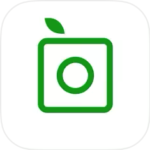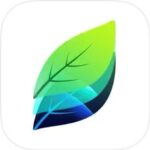Plant Identification Made Easy
28th July 2020
by Madeleine Stedman on behalf of The Landscape Association

We all have times we need some help identifying plants. While plant identification is a skill taught as part of your qualification, even the most experienced of us don’t know them all!
This is where modern technology can come to the rescue. There are a range of wonderful mobile applications bursting onto the market, some of them free and some of them available by subscription or with a small fee per identification.
Whether you are identifying plants purely for work purposes or you are a keen nature observer in your free time, there is an app to suit you.
We thought we would introduce our Members to some of the options currently available to help you narrow down some of the better options according to your needs, interests and budget.
Below is a quick table to help you compare some of the key features of the apps against each other. Following the table is a brief outline of each app, how it works, and its pros and cons. At the conclusion of the article you will also find some tips for making the most of whichever application you choose to use.
Table: Applications Key Features Comparisons


Leafsnap

Leafsnap was originally a science project launched by Columbia University, The University of Maryland and the Smithsonian to use visual recognition software to recognise plants in the United States. Since its 2011 foundation, the app has grown and now claims to be able to identify 90% of all the known species of plants and trees on earth.
Simply by taking a photograph of the plant you are trying to identify, the app will very quickly provide you with the suggested identifications, each with a brief description of the plant species, genus, family and common names. It will also provide you with the plant’s uses. You can save your images in your phone’s gallery for repeat access.
This app receives very high reviews from users for speed, ease of use and accuracy and it also provides easy links to outside information sources including Wikipedia, the Global Biodiversity Information Facility (GBIF) and Google. Note though, there is no search function for plants you have already identified and the in-app information is limited.
The basic version of this app is free, which is great, but it does include ads. Frequent users can subscribe to the Premium version for 1, 3 or 6 months starting from $6.99 per month.

Plantsnap

PlantSnap is a similar app to LeafSnap. It is a photo identification app and also has a search function for plants you have already identified. You can save your photo in a gallery and the app provides information on the Kingdom, Subkingdom, Super division, Division, Class, Subclass, Order, Family, Genus and Habitat of identified plants. Again, the in-app database contains limited information so if you want to learn more about the plant you have identified you will need to then go to other sources.
Like LeafSnap, the app claims to be able to recognise 90% of known species of plants and trees worldwide, with over 600,000 plants in the searchable database and over 150 million images to help with verifying the identification. The app is quick, easy to use and has been translated in 37 different languages.
The free version allows up to 10 free identifications per day but it does include advertisements which can be invasive and slow down use. The Premium version has a 7-day free trial and is available for a monthly subscription. A lifetime subscription is only $19.49 so for regular users this may well be the way to go.

Picture This

The Picture This app is another photo ID app option. Claiming a 90% accuracy rate for its 30 million users, it also has over 10,000 plant species in its database and growing daily. (Many plant ID apps can only recognise 2,000 to 3,000 species). The app is easy to use and includes information other apps do not include, such as care guides for plants, cleaning plants, repotting, pruning for blossoms and fruits, tips on identifying weeds and more.
While this app has a 7-day free trial, after the trial the cost is $29.99 per year. Warning: some users report that they have had trouble cancelling their subscription after the trial so consider giving yourself time to arrange cancellation if you choose not to continue.

Plant Identification Australia

Plant Identification Australia is the only Australian app on this list and is unfortunately only available on iOS. This app also offers photo ID using artificial intelligence technology and allows you to create your own ‘Collection’, as well as the ability to identify plants anywhere, anytime, even without internet access. The app claims to have a high-quality database superior to others by virtue of updating only from professionals and scientists. Plant Identification Australia also suggests you submit multiple photos of the plant to assist with accurate verification, which is a good feature.
This app has a 3-day trial but after this period it has a heftier price tag of $64.99 per year. It is detailed, efficient and accurate so this may be worth the investment for regular users given that it should be more useful in the Australian context than most of its competitors.
 PlantNet
PlantNet

PlantNet is a photo ID app that claims to be able to accurately identify over 20,000 species of plants. Similar to the LeafSnap app, the aim of this app is primarily to identify wild plants growing outside parks and gardens around the world. It has an extensive image library of different aspects of the identified plants thanks to the images submitted by users throughout the world. Image details focus on aspects such as flowers, leaves, fruit and trunk. The app also provides the Family, Genus, Species, Common Names and Uses of the plant, as well as easy links to GBIF, Wikipedia and Google. You can save your photos for later and also contribute them to the ‘Projects’ being conducted around the world for further user identification, location mapping and the scientific endeavour. The ‘Projects’ currently being conducted around the world include World Flora, Useful Plants, Weeds, Invasive Plants, and a variety of locations such as Asia, the US and Amazonia, however there is no Australian project at this point.
It is important to note that you must select the correct project when attempting to identify your plant or you may not get an identification listing. This makes the app a little tricky to use when you are looking at exotics, especially when you don’t know where to start. The app is really aimed at nature enthusiasts and amateur scientists rather than professionals but, if you are keen to use the app in your own time, then this one may well be worth exploring. Best of all, it is free!

iPlantFile Pro

The PlantFile company offers a range of products for use by professionals, amateurs and students: PlantFile Online, myPlantFile Pro, iPlantFile Pro, and PlantFile Student. iPlantFile Pro is the mobile version (with reduced capability compared to the computer-based myPlantFile Pro) so this is the product we will consider here for comparison.
Unlike the other apps we are looking at, iPlantFile Pro will not provide you with instant photo identification of plants, however, it does provide information on over 3,500 species and over 6,000 cultivars and varieties of commonly used ornamental and native plants, combined with 14,000 plant images. iPlantFile Pro is really an excellent companion app for other plant ID apps that provide little other information.
The student version is the app of choice in most TAFEs and colleges throughout Australia and it is clear to see why. Not only are iPlantFile Pro and Student both easy to use but the depth of information is extraordinary, covering 42 categories of essential information regarding cultivation requirements and botanic features. These include: a hardiness rating, soil preferences, sun requirements, plant size, pruning information and flower details, just to name a few.
The browser allows you to scroll through the plants pictorially and sort them or search for them by botanical or common names. Each species has a section on pests and diseases, there is a TALK feature with voice pronunciation and phonetic spelling and the gallery of detailed photos provide information on the growth habit of the mature plant as well as other relevant features. Other great aspects include:
• Advanced search capability, including multiple nested search functions, with glossaries
• The ability to download plant details for quick and easy, internet-free access
• The chance to save unlimited plant lists that can be exported to email, Facebook, Twitter or another iPlantFile Pro app
• The ability to email reports in a PDF format for professional presentation to colleagues and clients.

FlowerChecker

The FlowerChecker app is a photo ID app but works differently to the other apps. Instead of using artificial intelligence or visual identification software to pinpoint the plant, you send the photos to a team of experts for identification. The app claims that in 50% of cases you will receive an identification with 1 hour but the process can take up to 24 hours for more difficult identifications.
The app allows you to receive 3 free identifications as a trial after which time, the cost is US$1 per identification. There is no charge if the service is unable to identify the plant. FlowerChecker suggests you submit more than one photo of the features of the plant to assist with accurate identification and each ID provide by the experts is accompanied by an accuracy likelihood percentage.
With over 27 million successfully identified plants this app offers expert advice for plants that are more difficult to identify. In short, it is perhaps best used as another option when other apps have failed to produce results. Think of it as another tool in your kit. You can chat directly with botanists regarding your identification and the app also has useful links to Wikipedia and Google.
Tips for Using Photo ID Apps
No plant identification app is perfect. Consider these points when using your app to maximise your efficiency and ease of use.
Don’t Miss Our Next Newsletter
There are a number of other useful apps and websites that we would like to share with you so, lookout for the next TLA newsletter for other great digital resources.
Do you have an app, website or other great digital resource you would like to share with your colleagues? Do you have an issue or an area you would like us to help you explore? We’d love to hear from you.
Email us at team@landscapeassociation.com.au with your tips and suggestions.
Comments posted to this page are moderated for suitability. Once your comment has been checked it will be uploaded to the site.